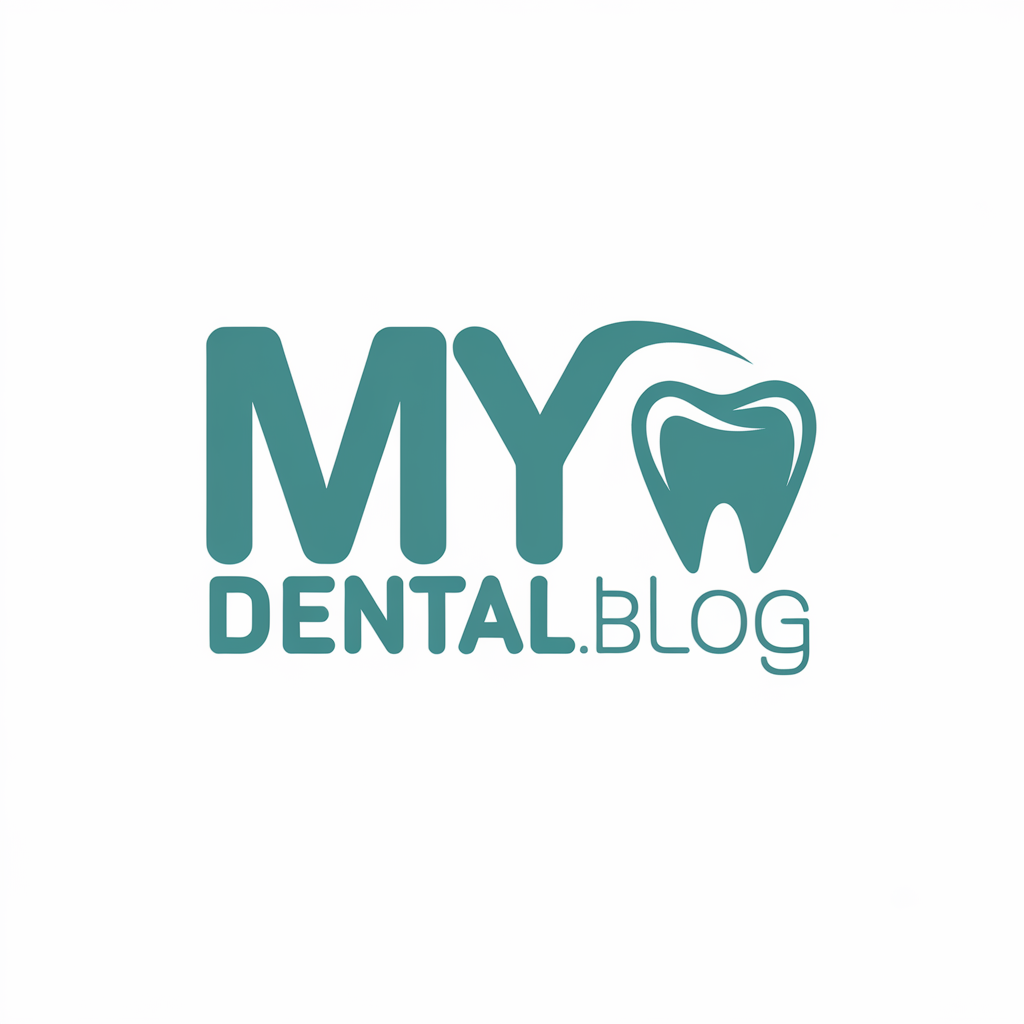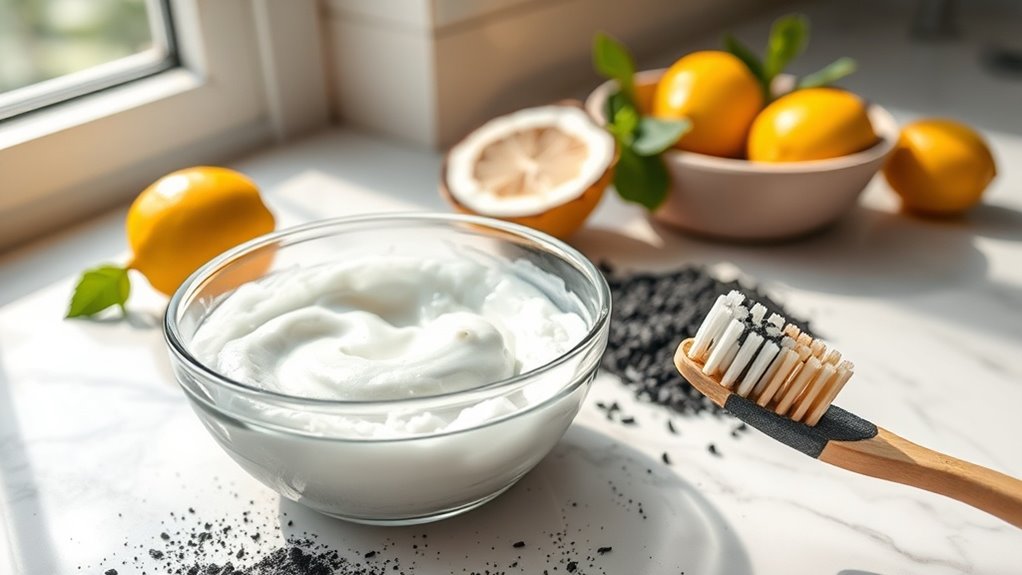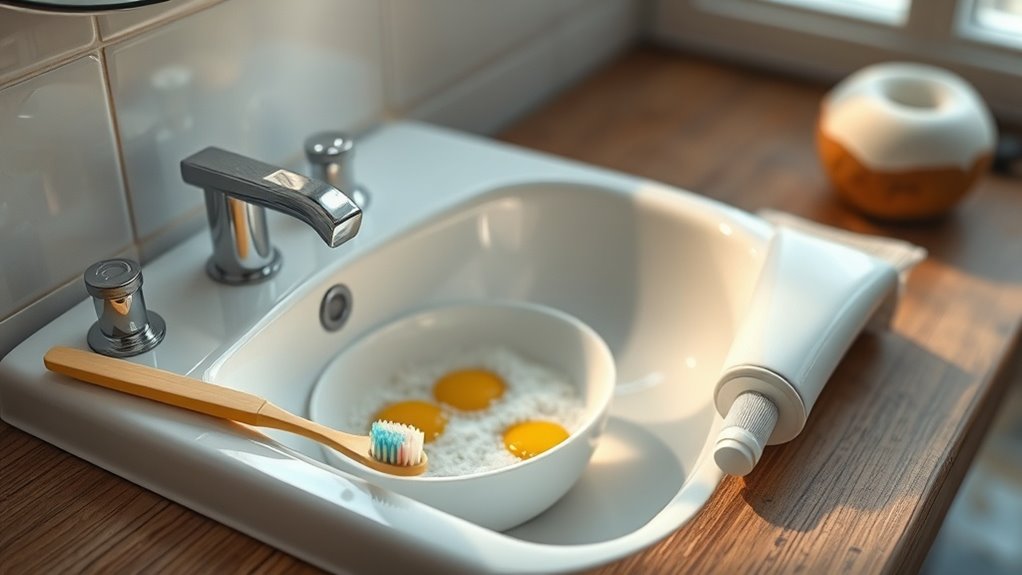Baking Soda on Teeth Daily. Here’s What You Should Know
If you’re considering using baking soda on your teeth daily, there are important factors to weigh. While it can help with stain removal and freshening breath, its abrasive nature might pose risks to your enamel and sensitivity. Understanding both the benefits and potential downsides is crucial. So, how can you use it safely without compromising your dental health? Let’s explore the essential guidelines and alternatives available to maintain a bright and healthy smile.
Key Takeaways
- Baking soda can effectively whiten teeth by removing surface stains but should be used sparingly to prevent enamel erosion.
- Daily use of baking soda may lead to increased tooth sensitivity and gum irritation due to its abrasive nature.
- It neutralizes mouth acids, reducing the risk of cavities and bad breath, promoting an overall healthier oral environment.
- To safely use baking soda, mix with water for a paste and apply with a toothbrush for no more than two minutes.
- Consult with a dental professional before incorporating baking soda into your daily routine to ensure it suits your oral health needs.
Understanding Baking Soda and Its Properties
While many people might think of baking soda solely as a leavening agent in baking, it possesses unique properties that make it valuable for dental care as well.
Baking soda, or sodium bicarbonate, has mild abrasive qualities, allowing it to effectively remove surface stains from teeth. Its alkaline nature neutralizes acids in the mouth, helping to combat bad breath and maintain oral pH balance.
Additionally, its antibacterial properties contribute to reducing harmful bacteria in your mouth, promoting healthier gums. Understanding how baking soda can enhance your oral hygiene is crucial for achieving brighter, cleaner teeth while maintaining overall dental health. Moreover, it serves as a quick and affordable alternative to expensive whitening treatments.
Benefits of Using Baking Soda for Oral Hygiene
Using baking soda for oral hygiene offers several notable advantages that can enhance your dental care routine. First, it’s an effective abrasive that helps remove surface stains from teeth, promoting a brighter smile.
Additionally, baking soda neutralizes acids in your mouth, reducing the risk of cavities and bad breath. Its natural properties can help balance pH levels, creating a less favorable environment for harmful bacteria. Furthermore, its mild abrasive properties aid in scrubbing away surface stains without damaging enamel.
As a cost-effective solution, baking soda is easily accessible and can integrate seamlessly into your daily brushing routine. Overall, using baking soda can significantly contribute to improved oral health and a fresher, cleaner mouth.
Potential Risks and Side Effects of Daily Use
Although baking soda can be beneficial for oral hygiene, daily use comes with potential risks and side effects that shouldn’t be overlooked.
Here are some concerns to consider:
-
Tooth Enamel Erosion: Frequent use may wear down protective enamel, increasing sensitivity.
-
Gum Irritation: The abrasive nature can lead to gum irritation and discomfort.
-
pH Imbalance: Overuse might disrupt your mouth’s natural pH, affecting overall oral health.
Additionally, improper technique while using baking soda can exacerbate enamel damage, leading to even more significant long-term issues.
It’s essential to weigh these risks against the benefits and consult a dental professional before incorporating baking soda into your daily routine.
Being informed helps you maintain a healthy balance in your oral care.
How to Safely Use Baking Soda on Your Teeth
To minimize the risks associated with baking soda, it’s important to know how to use it safely on your teeth.
First, use baking soda sparingly—once a week is generally sufficient. Mix a small amount with water to form a paste. Apply it gently with your toothbrush, focusing on your teeth for no more than two minutes. Rinse thoroughly afterward.
Avoid aggressive scrubbing, as this can damage enamel. Always follow up with fluoride toothpaste to help re-mineralize your teeth. Additionally, consider incorporating baking soda and hydrogen peroxide as a DIY whitening paste for more effective results.
Consult your dentist before starting any new dental regimen, especially if you have existing dental issues or sensitivity.
Alternative Whitening Options to Consider
When it comes to achieving a brighter smile, there are several effective whitening options to explore beyond baking soda.
You might consider:
-
Whitening Toothpaste: Formulated with special abrasives and chemicals that help remove surface stains.
-
Whitening Strips: Convenient and easy to use, these strips adhere to your teeth, delivering bleaching agents for noticeable results.
-
Professional Treatments: A dentist can provide in-office bleaching or customized take-home kits for more significant whitening effects.
It’s important to discuss the effectiveness of these treatments with your dentist, especially since natural methods like baking soda may take longer for visible results. Each of these options can effectively enhance your smile, so it’s worth discussing with your dentist to find the best fit for your needs.





